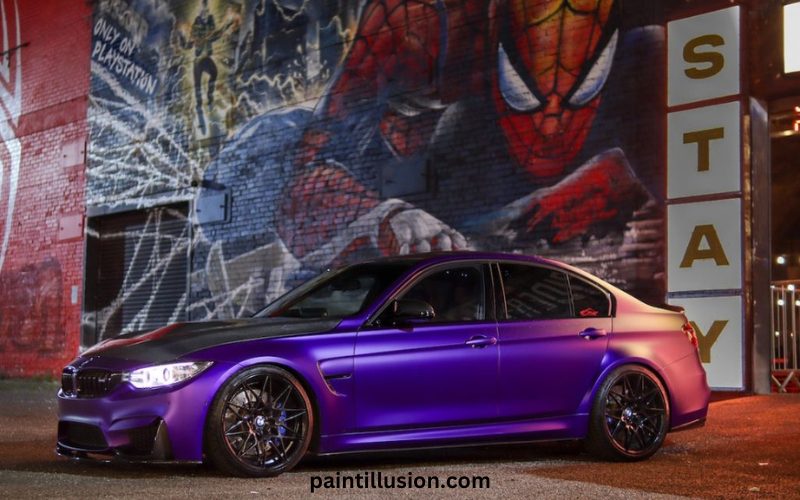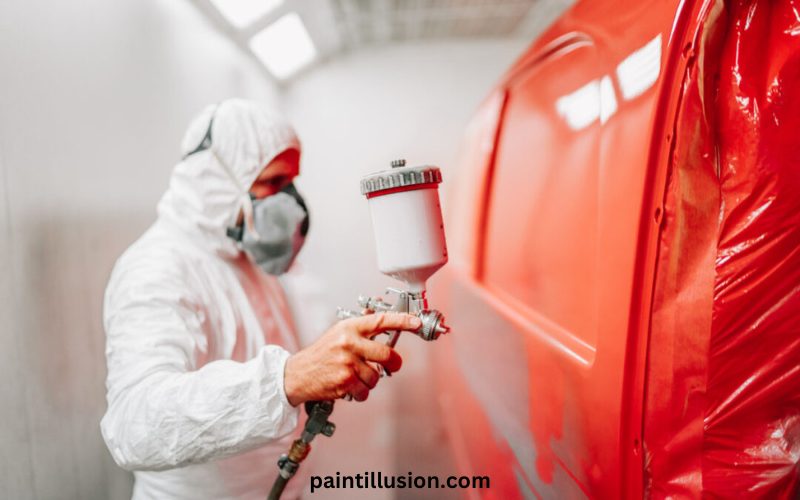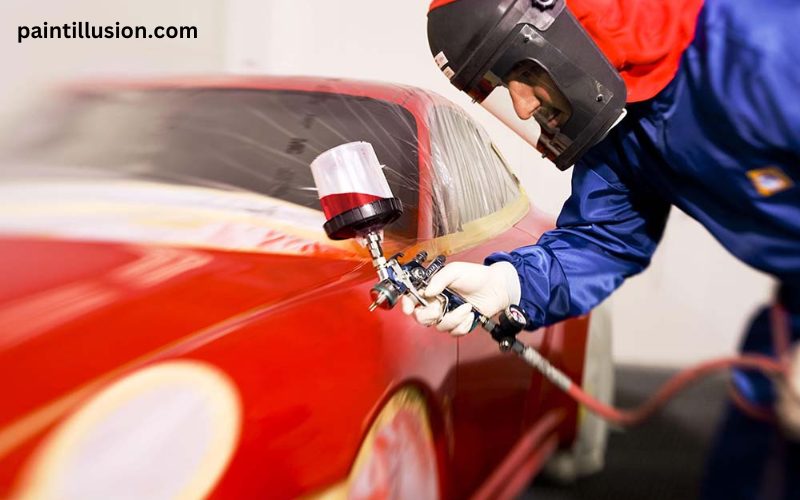If you’re considering painting your car, you’re probably wondering how long the process will take. Painting a car is a meticulous task that requires attention to detail and expertise. In this article, we will explore the factors that affect the time it takes to paint a car, the different methods of painting, and provide you with time estimates for each step of the process. Whether you decide to hire a professional or take on the challenge yourself, understanding the time involved will help you plan accordingly.
Factors That Affect the Time It Takes to Paint a Car
Several factors play a role in determining how long it will take to paint a car. The condition of the vehicle, the complexity of the paint job, and the chosen painting method all contribute to the time required for completion.
Firstly, the condition of the car is a crucial factor. If the vehicle has extensive damage, such as dents or rust, these issues must be addressed before painting can begin. Repairing these damages takes time and can significantly impact the overall timeline.
Secondly, the complexity of the paint job affects the duration. Are you looking for a simple color change, or do you want intricate designs and patterns? The more complex the desired paint job, the longer it will take to complete.
Lastly, the chosen painting method influences the time required. There are various methods available, such as hand-painting, spray painting, and powder coating. Each method has its own set of steps and drying times, which impact the total time needed to paint the car.

Preparing the Car for Painting
Before any paint can be applied to the car, thorough preparation is necessary. This step is crucial for achieving a professional-looking finish.
The first step in preparing the car is to clean it thoroughly. This includes washing the exterior to remove dirt, grime, and any residue that may affect the paint’s adhesion. Additionally, all wax and polish must be removed to ensure proper paint bonding.
Once the car is clean, it’s time to address any dents, scratches, or rust spots. These imperfections need to be repaired before painting to achieve a smooth surface. Depending on the extent of the damage, this step can take anywhere from a few hours to several days.
After the repairs are complete, the car needs to be sanded to create a smooth surface for the paint to adhere to. This step involves using different grits of sandpaper to remove any imperfections and create a uniform surface. Sanding the entire car can be time-consuming, especially if there are intricate areas or curves that require special attention.
Different Methods of Painting a Car
When it comes to painting a car, there are several methods to choose from. Each method has its own advantages and considerations, which we will explore in this section.
The traditional method of hand-painting involves using paintbrushes or rollers to apply the paint. This method allows for precise control and is suitable for small touch-ups or smaller areas. However, it can be time-consuming, especially for larger surfaces.
Spray painting is a popular method for painting cars due to its efficiency and ability to create a smooth finish. This technique involves using an air compressor and spray gun to apply the paint in thin, even coats. Spray painting allows for faster coverage and is suitable for larger areas. However, it requires proper ventilation and protective equipment.
Powder coating is another method that is gaining popularity in the automotive industry. This method involves applying dry powder to the car’s surface, which is then heated and fused to create a durable finish. Powder coating offers excellent resistance to chips, scratches, and UV rays. However, it requires specialized equipment and is not as easily accessible as other methods.
Time Estimates for Each Step of the Car Painting Process
Now that we have an understanding of the factors and methods involved in car painting, let’s explore the time estimates for each step of the process.
- Preparing the car: This step includes cleaning, repairing, and sanding the car. Depending on the condition of the vehicle, this can take anywhere from a few hours to several days.
- Priming: Applying a primer coat is crucial for achieving a smooth and long-lasting paint job. The primer needs to dry completely before moving on to the next step, which typically takes around 24 hours.
- Base coat: The base coat is the color layer of the paint job. It requires multiple thin coats, with drying time in between each coat. Depending on the complexity of the paint job, this step can take anywhere from a few hours to a couple of days.
- Clear coat: The clear coat provides protection and adds shine to the paint job. Similar to the base coat, it requires multiple thin coats with drying time in between. This step can take an additional few hours to a couple of days.
- Drying and curing: After the final coat of clear coat is applied, the car needs to dry and cure. This process can take anywhere from a few days to a couple of weeks, depending on the type of paint used and environmental conditions.

Tips to Speed Up the Car Painting Process
If you’re looking to speed up the car painting process, here are some tips to consider:
- Proper preparation: Thoroughly clean and repair the car before painting. This ensures a smooth surface and reduces the chances of any issues arising during the painting process.
- Use quality materials: Investing in high-quality paint and equipment can make a significant difference in the time it takes to paint a car. Quality materials often require fewer coats and provide better coverage, resulting in a faster process.
- Work in a controlled environment: Painting in a clean, well-ventilated, and temperature-controlled environment can expedite the drying and curing process. It also helps to minimize dust and other contaminants that can affect the final finish.
- Seek professional advice: If you’re unsure about any aspect of the car painting process, it’s always a good idea to consult with professionals. They can provide guidance, recommend the most efficient methods, and help you avoid potential mistakes that could prolong the process.
Hiring a Professional vs. DIY Car Painting
Deciding whether to hire a professional or take on the car painting process yourself is a personal choice that depends on various factors.
Hiring a professional offers several advantages. Professionals have the expertise, experience, and equipment to ensure a high-quality paint job. They are familiar with the best practices and can complete the process efficiently, saving you time and potential frustration. Additionally, professionals often provide warranties or guarantees on their work, giving you peace of mind.
On the other hand, painting your car yourself can be a rewarding experience if you have the necessary skills and patience. It allows for more customization options, and you have full control over the process. However, keep in mind that it requires a significant time commitment, research, and practice to achieve professional results.
Common Mistakes to Avoid When Painting a Car
When painting a car, it’s essential to be aware of common mistakes that can prolong the process or result in unsatisfactory outcomes. Here are some mistakes to avoid:
- Insufficient preparation: Failing to properly clean, repair, or sand the car can lead to paint adhesion issues and a subpar finish. Take the time to prepare the car thoroughly to ensure the best results.
- Rushing the process: Painting a car requires patience and attention to detail. Rushing through the steps can lead to mistakes or imperfections that will need to be corrected later on. Take your time and follow the proper procedures.
- Inadequate ventilation: Proper ventilation is crucial when working with paint and chemicals. Failing to provide adequate airflow can result in health hazards and affect the drying and curing process. Always work in a well-ventilated area or consider using proper respiratory protection.
Cost Considerations for Car Painting
The cost of painting a car can vary significantly depending on several factors. These factors include the size of the vehicle, the chosen painting method, the complexity of the paint job, and the professional’s expertise.
Hiring a professional to paint your car can cost anywhere from a few hundred dollars to several thousand dollars. The price will depend on the factors mentioned above, as well as the location and reputation of the professional.
If you decide to paint the car yourself, the cost will be primarily associated with materials. Quality paint, primer, clear coat, sandpaper, and other necessary supplies can add up. However, painting the car yourself can be more cost-effective if you have the skills and equipment required.
Conclusion
Painting a car is a meticulous process that requires time, attention to detail, and expertise. Factors such as the condition of the vehicle, the complexity of the paint job, and the chosen painting method all influence the time required. Whether you decide to hire a professional or take on the challenge yourself, proper preparation, patience, and following the recommended procedures are key to achieving a professional-looking finish. Consider the tips and advice provided in this article to ensure a successful car painting experience.

